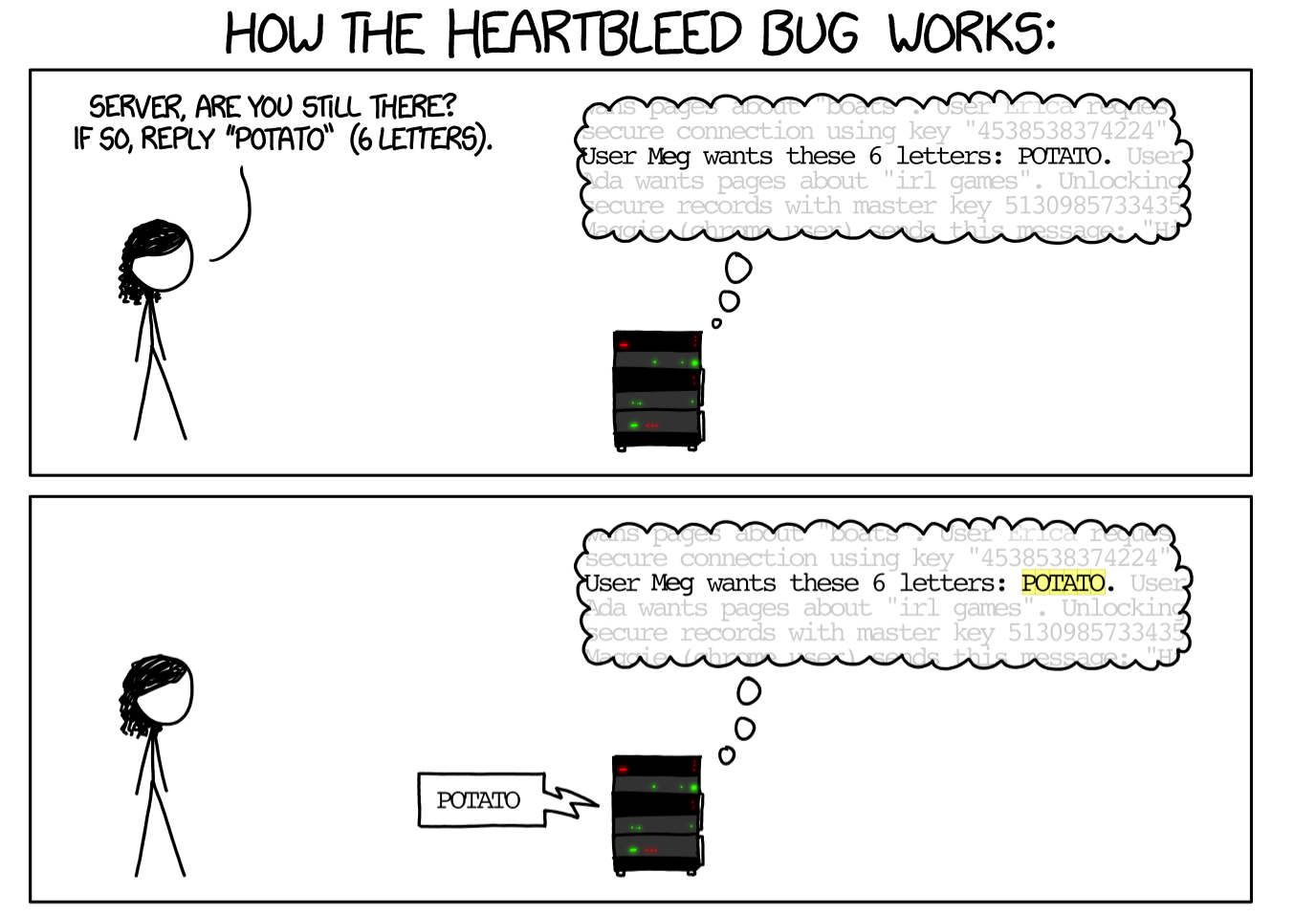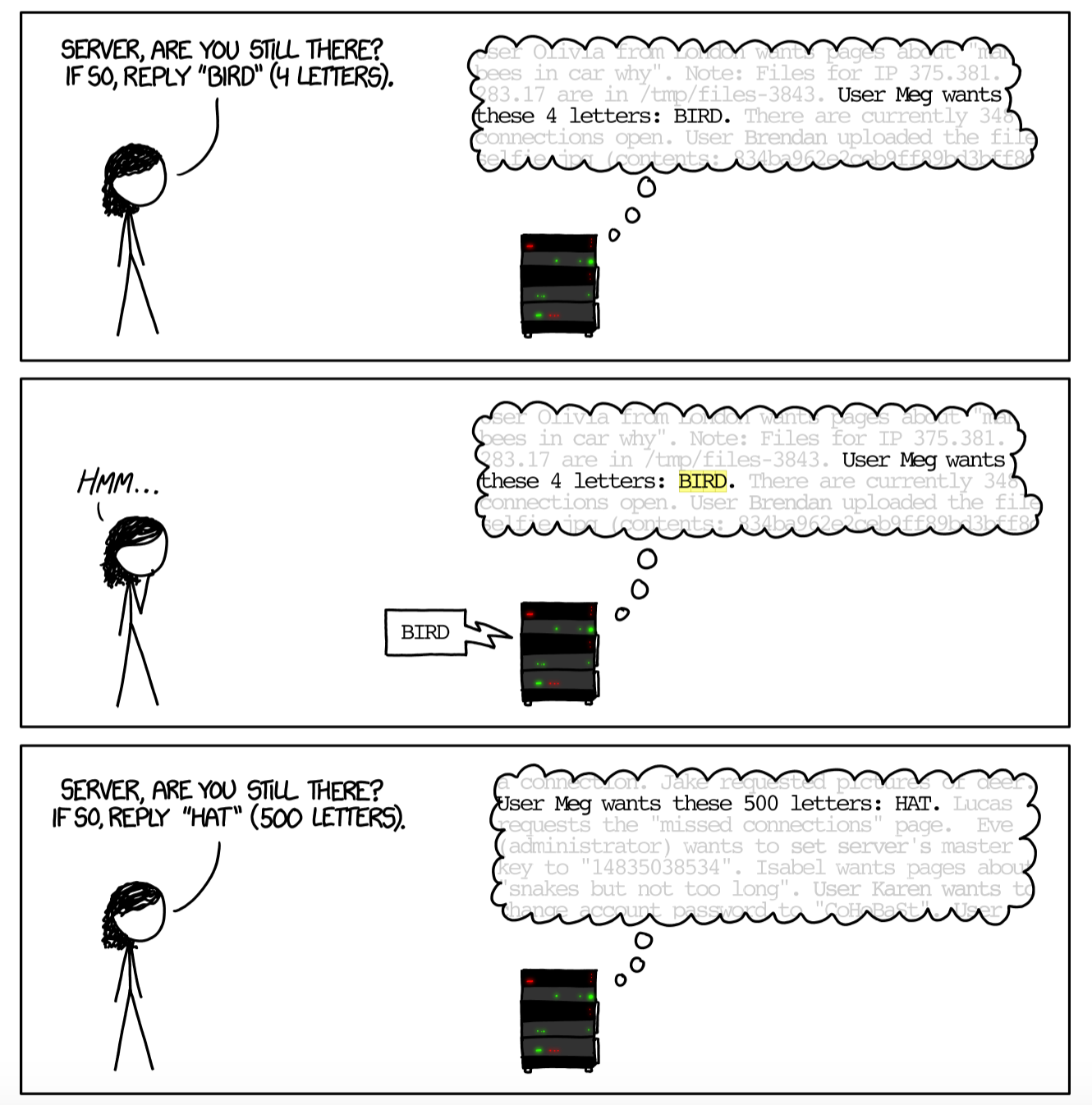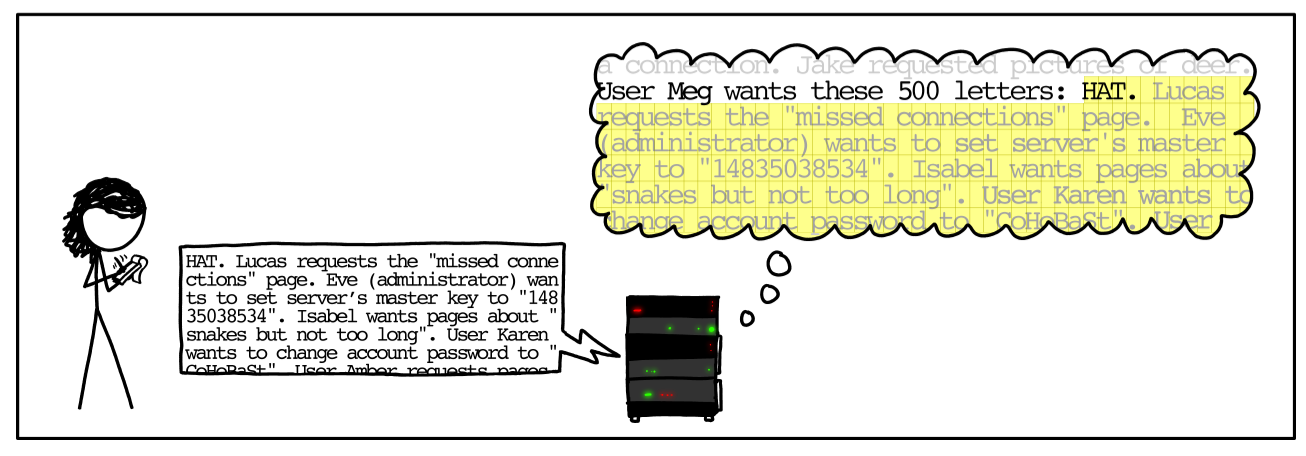SSL and TLS are frequently attacked, and understanding past attacks can inform defenders' knowledge to secure current systems and to predict the direction of future attacks. As such, here's a summary of some of the most famous attacks targeting these protocols:
Browser Exploit Against SSL/TLS (BEAST):
BEAST (disclosed in 2011) allowed a man-in-the-middle attacker to discover encrypted information from an SSL/TLS session. It impacted SSL 3.0 and TLS 1.0.
This attack depended on the implementation of the block cipher used by TLS. The implementation used CBC, Cipher Block Chaining mode, which involves XORing each block of plaintext (except the first) with the previous block of ciphertext, then using the encryption algorithm on the block. The first block is XORed with an IV (initialization vector). Much of the mode's security depends on the IV being truly random. However, TLS 1.0 didn't randomly generate IVs, it just used the last block of ciphertext from the previous message. That means that anyone able to snoop on the encrypted traffic had a copy of the IV.
An attacker who could snoop on the encrypted traffic could launch a chosen plaintext attack by guessing a block of data, XORing it with the (known) IV and the previous block of ciphertext and injecting the created block into the session. This allows the attacker to check if the entire block is correct. Given this, the flaw was seen as largely theoretical until BEAST was released. BEAST found a way to shift the cipher block boundaries to isolate one byte of a message at a time until it had been guessed. That, and the fact that HTTP messages are typically standardized so that an attacker would know where in the message sensitive information (like the session cookie) was transmitted, allowed an attacker to brute force compromise a session cookie.
While the attack was theoretically extremely interesting, and generated a lot of interest, it only works if the attacker can insert malicious code into a page and violate the same-origin policy. If the attacker has this much access to your system, they have a number of attacks they can attempt, many which are far less complicated to execute.
Mitigation Measures:
- (Safest) Only allow TLS 1.1 or 1.2 since they addressed the vulnerability. However, at the time, most websites and browsers didn't support TLS 1.1. or 1.2.
- As TLS supported both a block cipher and a stream cipher, switch to the stream cipher (RC4). However, in 2013 it was demonstrated that RC4 was insecure, and in 2015 it was officially banned (by the Internet Engineering Task Force, or IETF).
- Use a different block cipher mode. Unfortunately, TLS 1.0 didn't support any other modes.
- Insert packets of length 0. Essentially, as a packet of length 0 would be padded to the block size, it becomes a packet of just padding for the sender, but is immediately discarded by the recipient. These blocks would be used as IVs for the next message, solving the problem of insecure IVs. This option was largely unused as it caused interoperability issues with some SSL stacks, notably including Internet Explorer 6.0. OpenSSL implemented this, but disabled it by default.
- Practice defense in depth to prevent attackers from getting man-in-the-middle access to a victim network.
Sources/Further Information:
- How the BEAST Attack Works
- An Illustrated Guide to the BEAST Attack
- Original Write Up of BEAST
- A Comprehensive Study of BEAST, CRIME, TIME, BREACH, LUCKY 13 & RC4 Biases
Heartbleed:
Heartbleed (introduced in 2012/disclosed in April 2014) was a vulnerability in the heartbeat extension of the OpenSSL library (this is used to keep a connection opened). This library is used largely for servers running Apache and nginx (at the time of disclosure, roughly 17% of the internet's 'secure' (using SSL/TLS) websites were vulnerable), but impacted any server which depended on the vulnerable version of OpenSSL.
Essentially, the client sends a message to the server which contains the response it requests and the size of the response. The server would respond with the requested data in the size it was requested (see below for an explanation from xkcd).

The vulnerability was that the server would not check that the request was actually the same size as its stated size. If the user sent a requested response (ex. 'bird') which was shorter than the requested length (500 letters), the server would 'pad' the response with data from its memory to meet the length requirement, potentially leaking sensitive memory information.


This leaked data would be unencrypted and could contain anything - sensitive credentials, documents, etc. However, in order to successfully exploit this bug, several things need to happen - the site has to have implemented SSL, it needs to be running a vulnerable version of OpenSSL (the vulnerable versions were between 1.0.1 and 1.0.1f), the attacker needs to have had access to the environment between finding out the bug exists and it being patched, and there needs to have been something useful in memory at the time the attacker carried out the attack. This is relatively more difficult, though far from impossible.
Unfortunately, since the exploitation doesn't leave any abnormal traces in logs, it's hard to know if or how often this bug was actually exploited.
Also, this doesn't account for the danger of an attacker having previous pcaps of traffic and pulling the site's private key in an attack, which means they could have decrypted large amounts of sensitive data, causing a serious breach. If an intelligence agencies were able to pull off this type of attack, it's likely it would never be publicly released.
Mitigation Measures:
- Upgrade OpenSSL to the latest version, patching the vulnerability (the vulnerable versions were between 1.0.1 and 1.0.1f).
Sources/Further Reading:
- 5 Years Later, Heartbleed Vulnerability Still Unpatched
- XKCD Heartbleed
- Everything you need to know about the Heartbleed Bug
Padding Oracle On Downgraded Legacy Encryption (POODLE):
POODLE (disclosed in September 2014) took advantage of a flaw in SSL3.0. In order to support legacy systems, some systems continued to offer support for SSL 3.0, even though it had been replaced by newer versions. For the attack to be successful, the attacker needs to be able to control parts of the client side of the SSL connection and must have visibility of the resulting ciphertext (the most common way to have this access is to act as a man-in-the-middle). This attack, while powerful, does require a separate attack to gain this access.
During a typical handshake negotiation, the client and server will work together to find a protocol which works for both to communicate, starting with the highest protocol they both offer and working down (so the client may offer TLS 1.2, and the server may respond with TLS 1.1). However, if the connection fails (either due to an attacker or a network connection problem), the client server will downgrade to the lowest protocol they offer, likely SSL 3.0. This is a 'feature' offered so that servers and clients at different stages of advancement can communicate.
SSL3.0 uses either RC4 (stream cipher) or a block cipher in CBC mode for encryption. RC4 was well-known, even at the time, for having a number of flaws, including that if the same secret (like a cookie) was sent repeatedly, more and more information about it would leak.
CBC mode requires that the message length is a multiple of the block size or that padding is used to fulfill the length condition. This means that padding is frequently used, and in the SSL 3.0 implementation it isn't verified that is hasn't changed in transit. Essentially, while the message is hashed before sending and at the receiving end, and the re-compiled hash is compared to ensure message integrity, the padding is not included.
The only specification for padding is that the last byte needs to be the padding length. Therefore, an attacker can replace the padding and it will still be accepted, as long as they get the last digit correct. If an attacker knows the location of the data they're trying to decrypt (for example an HTTP session cookie - which is typically sent in the same part of the block each time and is therefore easy to locate), they can copy it over into the final block, replacing the padding.
Then, the receiver will XOR the padded block with the previous block's ciphertext (which the attacker can see) and will only accept the data if the last byte matches the padding's length.
Essentially this attack makes brute-forcing SSL feasible - whereas it would be practically impossible to brute force SSL without any information, this attack allows for recovering each byte after a maximum of 256 attempts per byte. That means that, in a few minutes, an attacker could compromise a session cookie or other sensitive information.
Mitigation Measures:
- Disabling SSL 3.0 is the only complete mitigation of POODLE. However, some sites only supported SSL 3.0.
- An alternative is to use the TLS_FALLBACK_SCV cipher suite. This suite allows a server to fall back to earlier protocols, but rather than dropping immediately to SSL 3.0, the client can specify a preference. One problem with this suite is that it wasn't broadly supported when it was introduced (limited to largely Google services). Additionally, if the only option the server supports is SSL 3.0, POODLE attacks are still possible. However, it means that an attacker can't force a downgrade on a connection with a server which supports alternative protocols.
- Practice defense in depth to prevent attackers from getting man-in-the-middle access to a victim network. While the attack is dangerous, it requires man-in-the-middle access, making it much harder to exploit than the remotely exploitable Heartbleed.


